
LOADING ...
In response to evolving domestic opinion, eMedals Inc has made the conscious decision to remove the presentation of German Third Reich historical artifacts from our online catalogue. For three decades, eMedals Inc has made an effort to preserve history in all its forms. As historians and researchers, we have managed sensitive articles and materials with the greatest of care and respect for their past and present social context. We acknowledge the growing sentiments put forth by the Canadian public and have taken proactive actions to address this opinion.
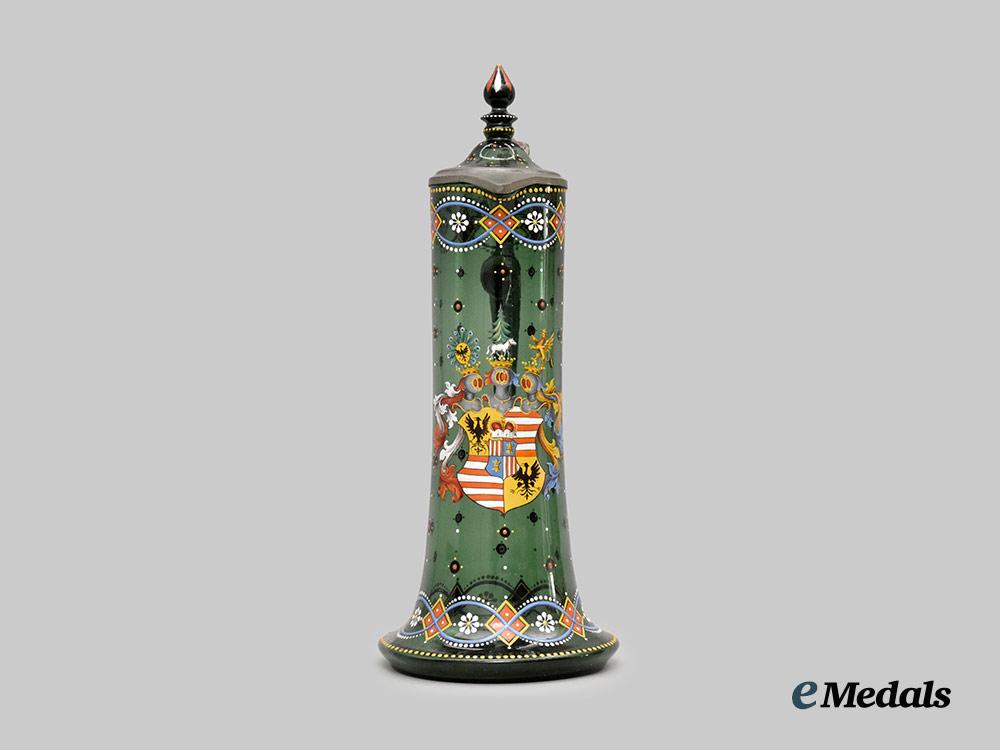
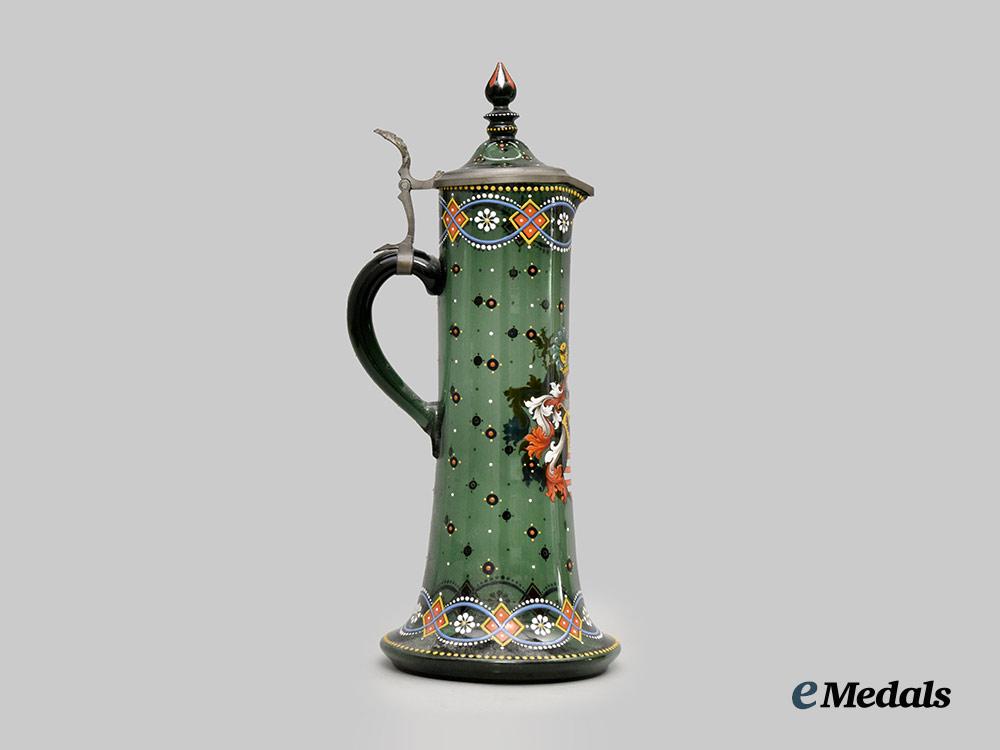
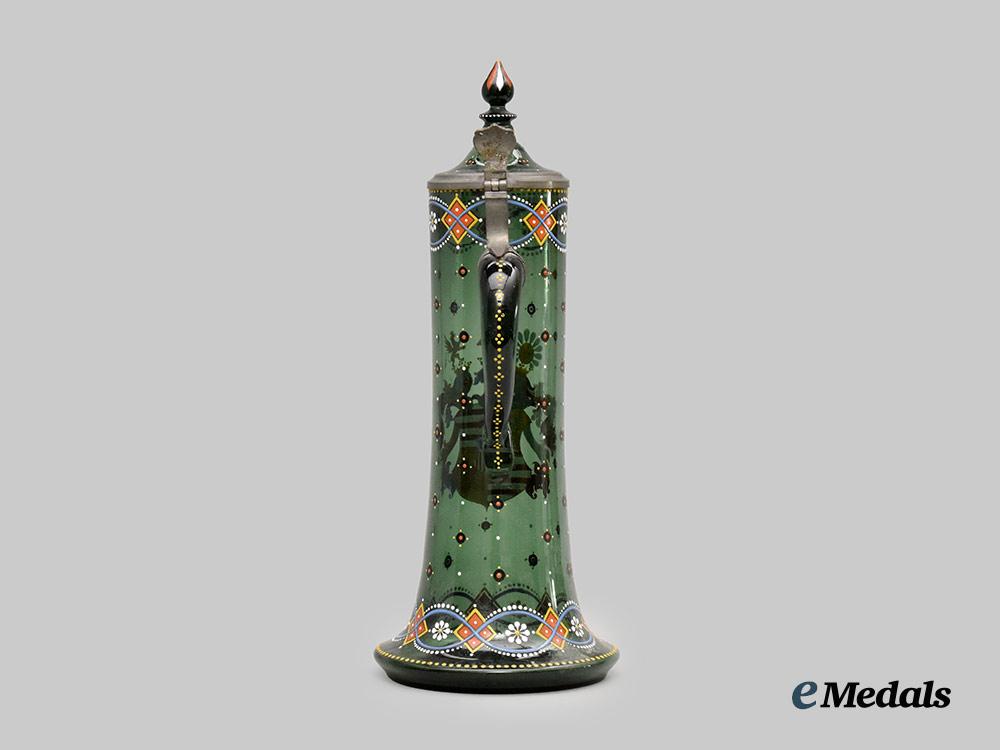
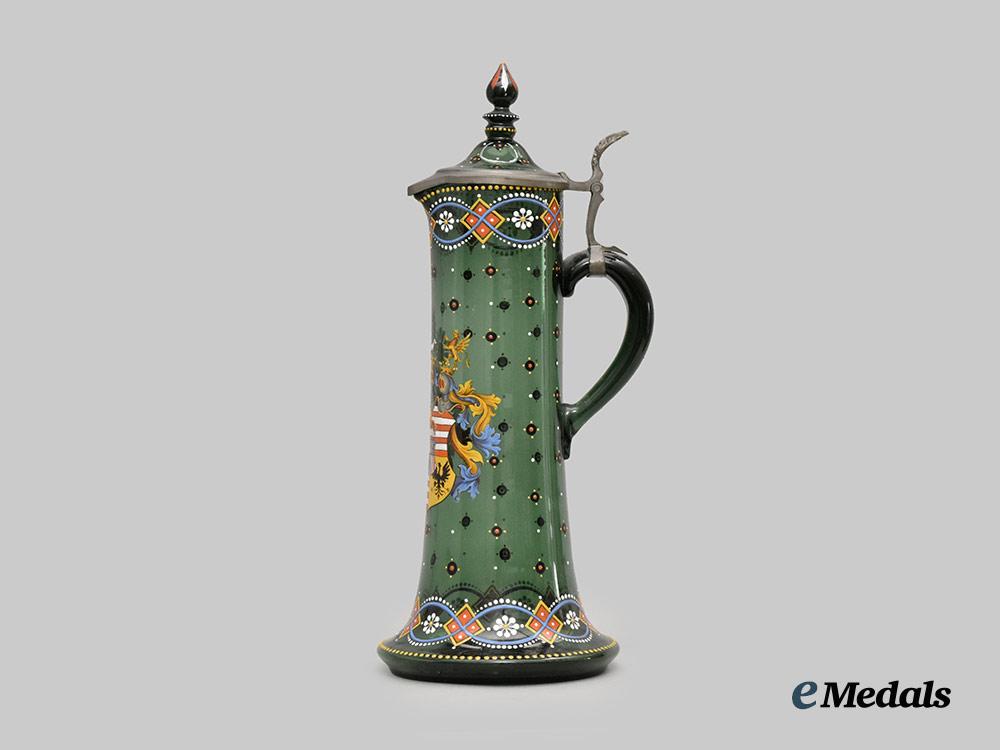
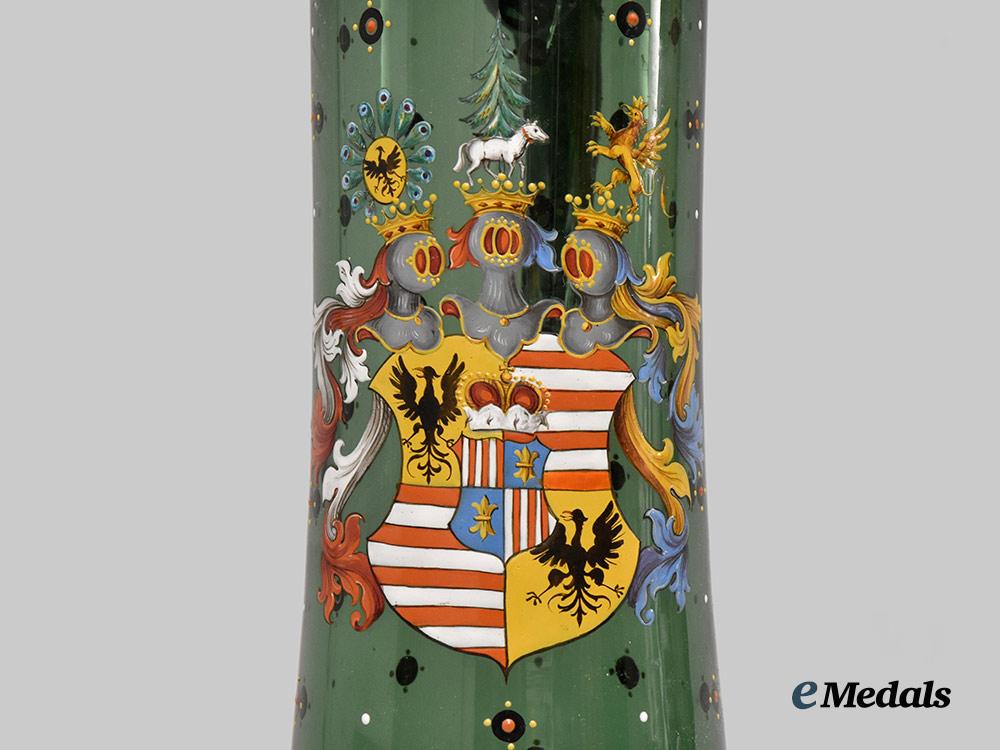
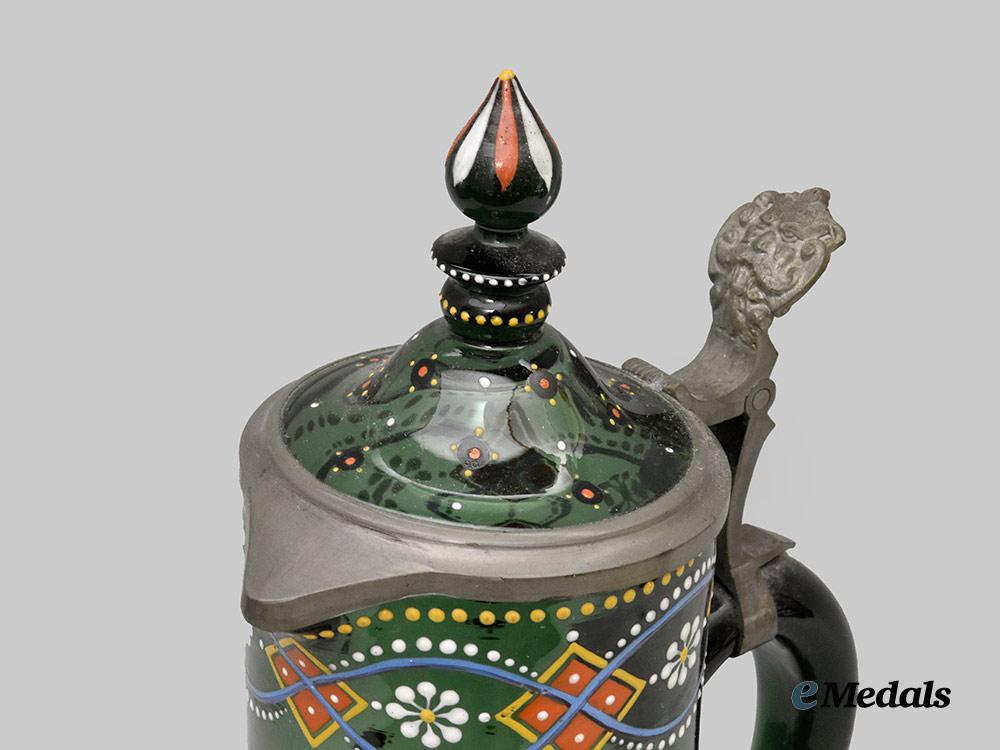
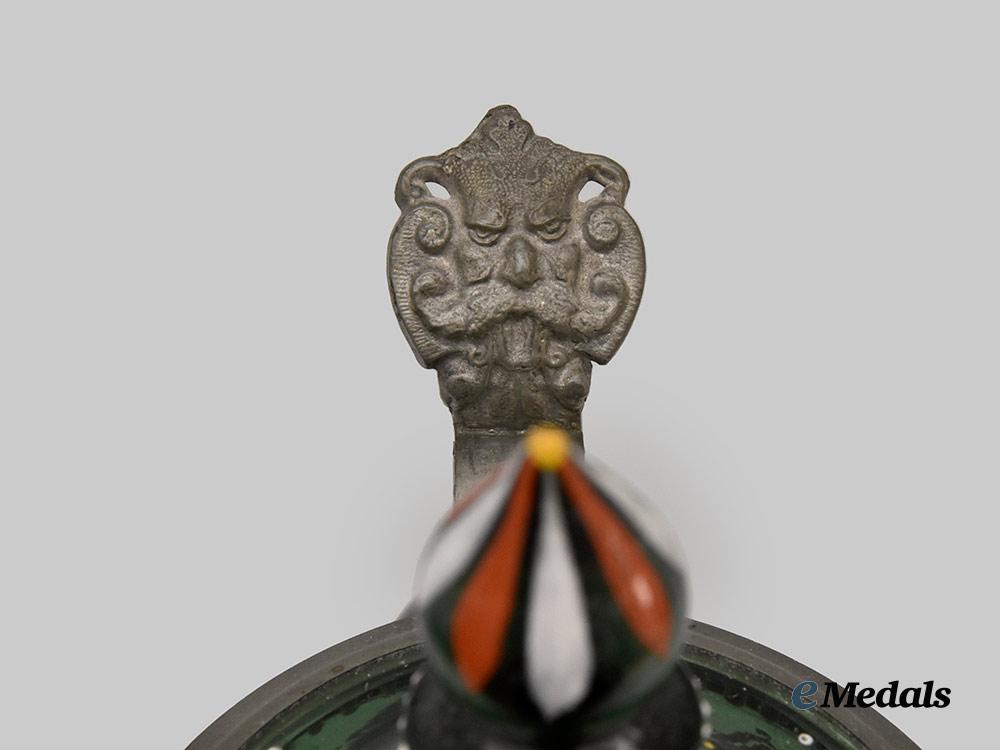
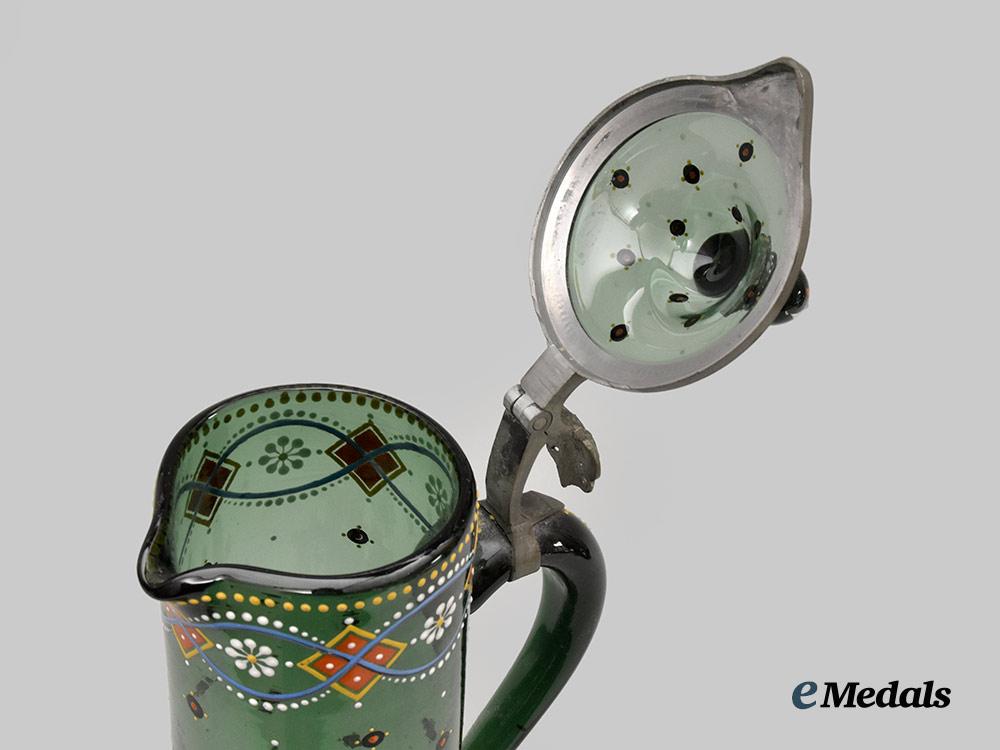
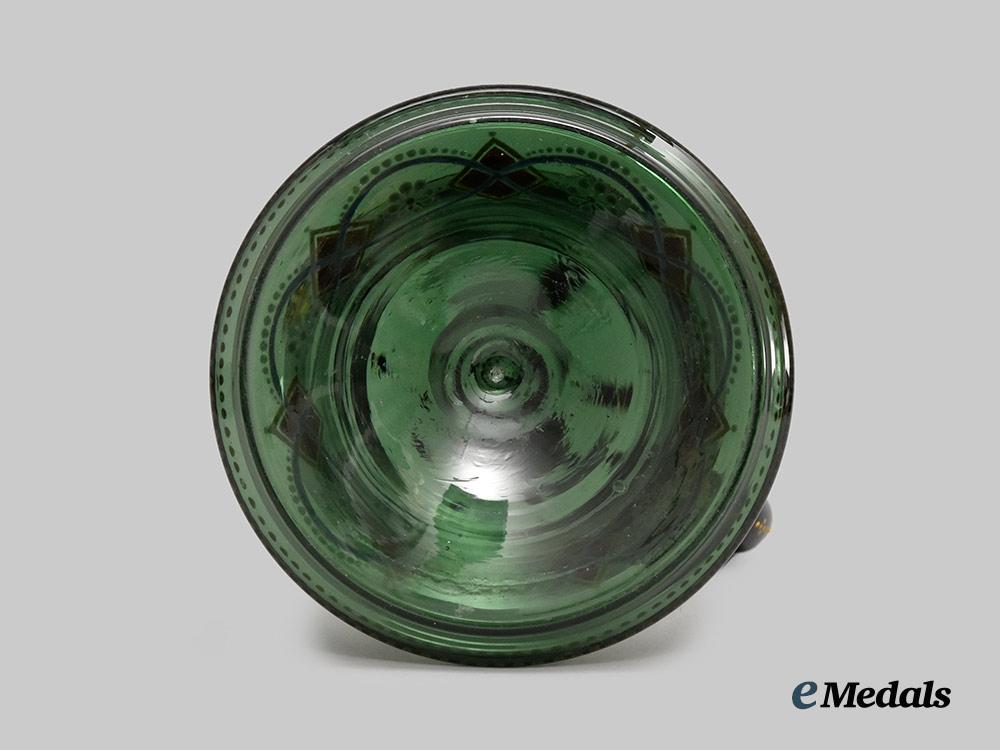
Germany, Imperial. A Superb Imperial University Stein, c.1900
Germany, Imperial. A Superb Imperial University Stein, c.1900
SKU: ITEM: G31358
Current Bid:
Your Max Bid:
Bid History:
Time Remaining:
Couldn't load pickup availability
Shipping Details
Shipping Details
eMedals offers rapid domestic and international shipping. Orders received prior to 12:00pm (EST) will be shipped on the same business day.* Orders placed on Canadian Federal holidays will be dispatched the subsequent business day. Courier tracking numbers are provided for all shipments. All items purchased from eMedals can be returned for a full monetary refund or merchandise credit, providing the criteria presented in our Terms & Conditions are met. *Please note that the addition of a COA may impact dispatch time.
Shipping Details
eMedals offers rapid domestic and international shipping. Orders received prior to 12:00pm (EST) will be shipped on the same business day.* Orders placed on Canadian Federal holidays will be dispatched the subsequent business day. Courier tracking numbers are provided for all shipments. All items purchased from eMedals can be returned for a full monetary refund or merchandise credit, providing the criteria presented in our Terms & Conditions are met. *Please note that the addition of a COA may impact dispatch time.
Description
Description
Of the highest possible quality and make, likely made for as a gift within a University from a wealthy German family; The body and the lid of the stein is fabricated from an emerald green hand blown glass, incorporating various hand-painted designs in red, orange, yellow, blue, green, purple, white, black and gray paints. It features a coat-of-arms (AKA zirkel = a student's' sign of recognition, declaring membership in a certain association and that the student belongs to the association over his lifetime) on the front centre, the arms composed of a small shield bearing floral designs in opposite corners, the other two corners with alternating red and white vertical stripes, the small shield surmounted by a crown and placed in the centre of a larger shield, which bears a single black eagle in opposite corners, the other two corners with alternating red and white horizontal stripes. The arms is surmounted by three crowned knight's helmets, the center helmet face-on and is surmounted by a horse and evergreen, the helmets on either end turned inward and facing the centre helmet, the left helmet's crown surmounted by a black eagle within a circle with twelve peacock feathers emanating from it, the right helmet's crown surmounted by a crowned griffin. The larger shield is flanked by red and white ornate leafing on the left side and blue and yellow ornate leafing on the right side. The stein has ten vertical rows around the circumference of the stein, that continue onto the lid, incorporating a repeating design of alternating white dots versus red dots centering a larger black dot, which in turn on surrounded by four yellow dots. The top and bottom edges of the stein are designed with a series of tilted orange squares with four white dots, along with flower bursts with yellow centres and eight white petals, in an alternating pattern and linked by blue interlocking waves. The top edge butting the lid and the outer edge of the flared base are trimmed in a series of yellow dots around the circumference, the stein itself designed with a semi-conical base and sits slightly askew. The emerald green glass cap is terminates with a pointed finial that is designed with eight drip-like strips in red and white and is finished with a yellow dot at the peak. The lid incorporates a frame in pewter, enclosing the emerald green glass cap, the accompanying hardware (tang, hinge pin, thumb lift, shank, strap and strap support) also in pewter, the thumb lift designed with a jester's head, the handle also in emerald green glass and fed through the pewter strap. The stein measures 160 mm in diameter at the base x 480 mm in height, exhibiting a 35 mm long crack in the body of the stein where it joins the upper end of the handle, in addition to one of the yellow dots on the outer edge of the flared base being chipped. Extremely fine.
Footnote: Student steins were available in many varieties, with numerous types of decorative materials used in production. They used practically every drinking vessel imaginable and decorated them with special symbols, most of which were designed with coats-of-arms of student associations (AKA Zirkel), along with dedications to friends. The arms included different symbols which indicated the town where the university was located, often using symbols including beakers, instruments known as lyres, the tree of life and the snake. The "zirkel" and colours of the association shown regularly in the helmet, wisps of the coat-of-arms and in the helmet covers, indicated connection and their willingness to help and assist each other. It is generally very difficult to determine the association and the location of the university on most of the student steins, as there is no complete reference guide, with the name and founding date not always to be seen. Even if information regarding the name of the owner, the date of receipt (if a gift) or purchase, the name of the university and where the student is from were available, it will sometimes not be possible to determine exactly which of the many associations are represented by the "zirkel" on the steins. In the past there were about 4,000 different associations accessible to German students at the universities, in Germany, Austria and the rest of Europe. Today, 1,000 associations still exist, although many of them have closed or combined with others. A number of associations closed due to national prohibitions, and did not reopen after the prohibitions were dropped. This is true of the Jewish association, which never reopened after the end of the national socialist dictatorship. A well-known member of these associations was Count Claus Phillip Maria Schenk Graf von Stauffenberg, a leading member of the resistance against Adolf Hitler.
Shipping Footnote: Please note that there will be an additional shipping charge during or post time of purchase.
Description
Of the highest possible quality and make, likely made for as a gift within a University from a wealthy German family; The body and the lid of the stein is fabricated from an emerald green hand blown glass, incorporating various hand-painted designs in red, orange, yellow, blue, green, purple, white, black and gray paints. It features a coat-of-arms (AKA zirkel = a student's' sign of recognition, declaring membership in a certain association and that the student belongs to the association over his lifetime) on the front centre, the arms composed of a small shield bearing floral designs in opposite corners, the other two corners with alternating red and white vertical stripes, the small shield surmounted by a crown and placed in the centre of a larger shield, which bears a single black eagle in opposite corners, the other two corners with alternating red and white horizontal stripes. The arms is surmounted by three crowned knight's helmets, the center helmet face-on and is surmounted by a horse and evergreen, the helmets on either end turned inward and facing the centre helmet, the left helmet's crown surmounted by a black eagle within a circle with twelve peacock feathers emanating from it, the right helmet's crown surmounted by a crowned griffin. The larger shield is flanked by red and white ornate leafing on the left side and blue and yellow ornate leafing on the right side. The stein has ten vertical rows around the circumference of the stein, that continue onto the lid, incorporating a repeating design of alternating white dots versus red dots centering a larger black dot, which in turn on surrounded by four yellow dots. The top and bottom edges of the stein are designed with a series of tilted orange squares with four white dots, along with flower bursts with yellow centres and eight white petals, in an alternating pattern and linked by blue interlocking waves. The top edge butting the lid and the outer edge of the flared base are trimmed in a series of yellow dots around the circumference, the stein itself designed with a semi-conical base and sits slightly askew. The emerald green glass cap is terminates with a pointed finial that is designed with eight drip-like strips in red and white and is finished with a yellow dot at the peak. The lid incorporates a frame in pewter, enclosing the emerald green glass cap, the accompanying hardware (tang, hinge pin, thumb lift, shank, strap and strap support) also in pewter, the thumb lift designed with a jester's head, the handle also in emerald green glass and fed through the pewter strap. The stein measures 160 mm in diameter at the base x 480 mm in height, exhibiting a 35 mm long crack in the body of the stein where it joins the upper end of the handle, in addition to one of the yellow dots on the outer edge of the flared base being chipped. Extremely fine.
Footnote: Student steins were available in many varieties, with numerous types of decorative materials used in production. They used practically every drinking vessel imaginable and decorated them with special symbols, most of which were designed with coats-of-arms of student associations (AKA Zirkel), along with dedications to friends. The arms included different symbols which indicated the town where the university was located, often using symbols including beakers, instruments known as lyres, the tree of life and the snake. The "zirkel" and colours of the association shown regularly in the helmet, wisps of the coat-of-arms and in the helmet covers, indicated connection and their willingness to help and assist each other. It is generally very difficult to determine the association and the location of the university on most of the student steins, as there is no complete reference guide, with the name and founding date not always to be seen. Even if information regarding the name of the owner, the date of receipt (if a gift) or purchase, the name of the university and where the student is from were available, it will sometimes not be possible to determine exactly which of the many associations are represented by the "zirkel" on the steins. In the past there were about 4,000 different associations accessible to German students at the universities, in Germany, Austria and the rest of Europe. Today, 1,000 associations still exist, although many of them have closed or combined with others. A number of associations closed due to national prohibitions, and did not reopen after the prohibitions were dropped. This is true of the Jewish association, which never reopened after the end of the national socialist dictatorship. A well-known member of these associations was Count Claus Phillip Maria Schenk Graf von Stauffenberg, a leading member of the resistance against Adolf Hitler.
Shipping Footnote: Please note that there will be an additional shipping charge during or post time of purchase.








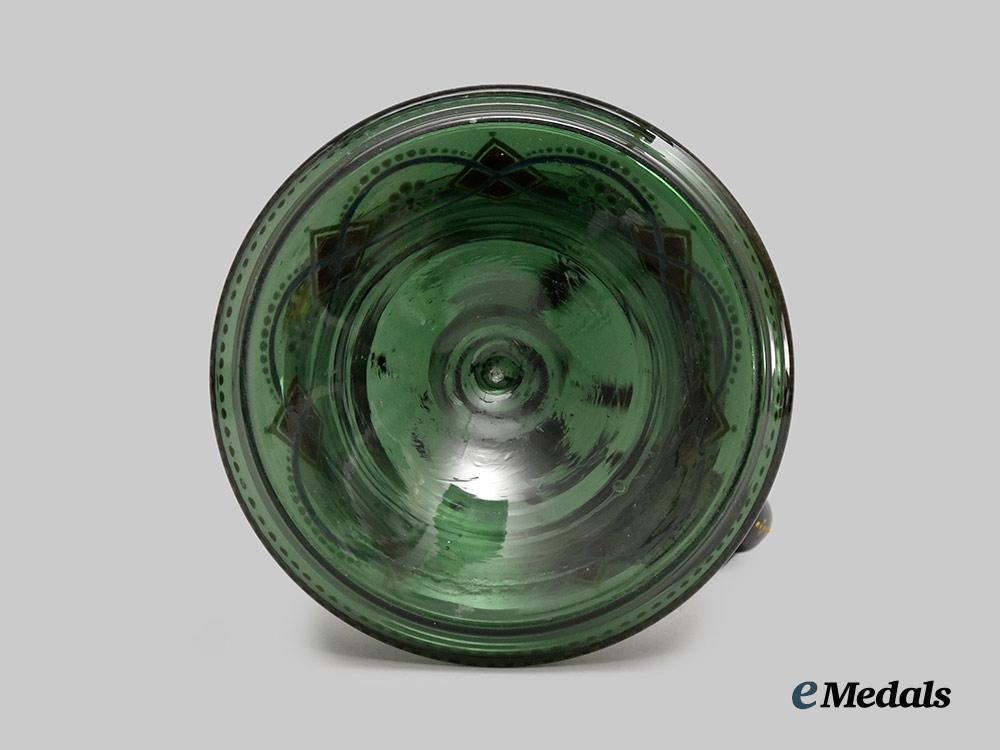
You May Also Like
Japan, Empire. A T90 Civil Defense Helmet, c.1943
W8287
Canada, Commonwealth; United Kingdom. A Mixed Lot of St. John Ambulance Association Medals and Uniform Insignia
M0231-134
Canada, Commonwealth. A Pair of St. John Ambulance Medals to Charles E. Jefkins, Hamilton, Ontario Superintendent
M0231-128
Canada, Commonwealth. A Lot of Awards, Documents, and Photographs to Peter Mori, St. John Ambulance Corps Superintendent for Hamilton, Ontario
M0231-122
Canada, CEF. A Large Oval Photo
C7175
-
Japan, Empire. A T90 Civil Defense Helmet, c.1943
W8287
Add to CartRegular price $275 USDRegular price $0 USD Sale price $275 USDUnit price / per -
Canada, Commonwealth; United Kingdom. A Mixed Lot of St. John Ambulance Association Medals and Uniform Insignia
M0231-134
Add to CartRegular price $135 USDRegular price $0 USD Sale price $135 USDUnit price / per -
Canada, Commonwealth. A Pair of St. John Ambulance Medals to Charles E. Jefkins, Hamilton, Ontario Superintendent
M0231-128
Add to CartRegular price $100 USDRegular price $0 USD Sale price $100 USDUnit price / per -
Canada, Commonwealth. A Lot of Awards, Documents, and Photographs to Peter Mori, St. John Ambulance Corps Superintendent for Hamilton, Ontario
M0231-122
Add to CartRegular price $225 USDRegular price $0 USD Sale price $225 USDUnit price / per -
Canada, CEF. A Large Oval Photo
C7175
Add to CartRegular price $120 USDRegular price $0 USD Sale price $120 USDUnit price / per
Do you have a similar item you are interested in selling?
Please complete the form and our client care representatives will contact you.
Sell Item






















